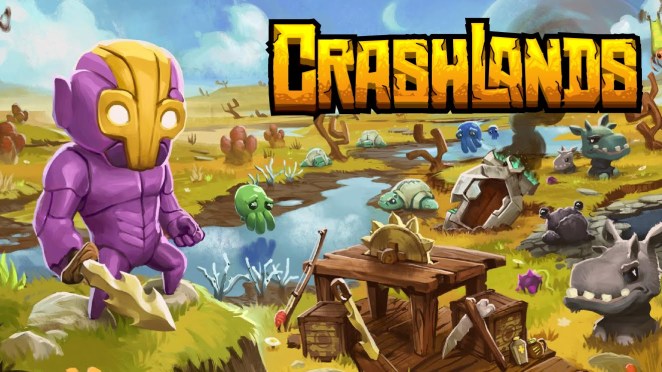When Samuel Coster was diagnosed with stage 4b non-Hodgkin lymphoma, his chance of survival was clocked at around 7%. Part of Butterscotch Shenanigans, a three brothers strong game development studio that had then been working on an infinite runner game, Sam made a decision. If he was going to die, he was done waiting to live how he wanted and he was going to start now. I’m not here to tell you the rest of Crashlands’ story, Mr. Coster does a much better job of that himself, instead I want to reflect on life, games, design, and meaning. How have you designed your life?
In a lot of ways, the society we live in, the animal we are, and the world around us have designed every aspect of our existence. It’s only natural to play within those designs, its how humans learn about their environments and it feels fun, but at some point we’ll also feel the limitations. Some red tape here, a dirty look there, the lull of a salesman’s con, the pain of hunger, the faltering of our fragile shells in sickness; these limitations are real and more real for certain people. To cope with the control our existence exacts upon us, Samuel Coster took responsibility over the autonomy he was given and so should we all. In every way you can, design your life to encourage the things you believe about yourself and the future you want to bring about. Ask yourself the simple question: How would a game designer make me want to do this?
“I don’t want this to be the last game I make before I die.” Its a powerful thing to know you’re going to die, but don’t we all know it? Our mortality seems to be an emboldening aspect of our life, either creating risk aversion that maintains the status quo or dismantling that aversion in a rush towards the inevitable. Acceptance of mortality is the ultimate conquering of human psychology, if it is possible. Somewhere between YOLO and heaven lies a state of acknowledgement and transformation that Camus refers to as “confronting the Absurd” but that others have found in music, literature, and games. A pleasant rebellion from life through the escapism of simulation/reconstruction that draws its power through the separation it exacts, games in particular allow for a life that doesn’t accomplish within the confines of reality but instead wallows in the confines of itself. Artists, idealists, and theorists never design with the intent of their designs being put in place but instead design with the intent of transforming the landscape of practicality entirely. This is not to say that I suggest abandoning real work, but rather that art, literature, and language exist as part of this false creation and that Crashlands is no different.

Butterscotch Shenanigans set to work on Crashlands because they wanted to change the world, and they knew the best way to do it was not to. Whether they succeeded with this Don’t Starve style RPG is entirely up to you.
